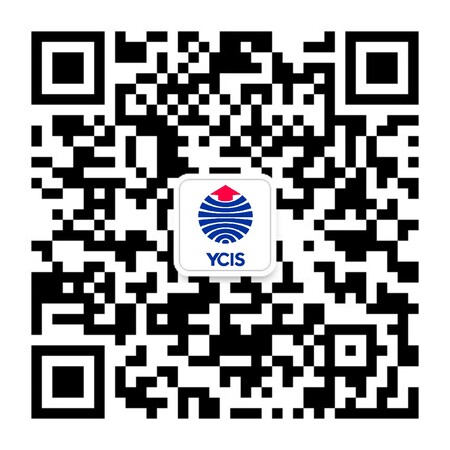Go Back
News
News
Our Artist-in-Residence’s Awesome Advice for Aspiring Artists
News
02 Dec, 2016
10 : 00
This fall, renowned space and sculpture artist Megan Mosholder joined YCIS Beijing for a stint as our Artist-in-Residence, a unique role at the school that gives students the opportunity to learn directly from a professional, practicing artist. Below, Ms. Mosholder offers important guidance for Secondary School students considering careers in art.
Please introduce yourself.
I am a conceptual artist who operates in the real-world setting of the social-political landscape through site-responsive, sculptural installations. I am a graduate of the Savannah College of Art and Design and have received numerous awards from institutions such as the Foundation for Contemporary Arts and the Hambidge Center for Creative Arts and Sciences. A variety of publications have featured my work, including Beautiful/Decay, Hi-Fructose, and Huffington Post. My diverse exhibition history includes participation in No Longer Empty’s Through the Parlor (2013) in New York and an installation in Sirmione, Italy (2014), a body of work that speaks of the lasting impression a place of beauty can leave on an individual. More recently, I have been working in the corporate sector installing commissioned, permanent artworks, including a temporal, light-sensitive piece for Google's new office in Pittsburgh, PA.
Originally from Ohio, I’m currently based in Atlanta, GA but will be relocating temporarily in January 2017 to Oklahoma for the Tulsa Artist Fellowship.
How did your interest in art start and how has it grown over the years?
As soon as I could hold a pencil! As early as five I was complaining that people did not take me seriously as an artist.
Ever since completing graduate school in November 2012, I have worked to create a sustainable practice for myself as an artist. Currently, this involves installing work for the private corporate sector. Most recently, I have been installing site-specific art installations, including at W Hotels, Google, and so forth. This type of work has helped to fund more personal projects such as “Harmonic Sky,” a piece I just recently built in New York before traveling to Beijing.
Have you worked with students before? Could you share some of your favorite projects you have worked on with students?
I have a Masters in Education taught High School Art and Experiential Education for four years before returning to school to get my Masters in Fine Art.
My favorite project was co-taught with a science teacher. The class was created for what our school called “Winterim,” where students took one month-long intensive course. This class incorporated life drawing and anatomy. Student’s studied the body, learning all the names of the specific parts, thereby engaging both sides of the brain (left and right hemispheres) to help them to develop higher-level thinking skills.
Our final presentation displayed the student’s graphite self-portrait drawings in three stages: normal, with muscles, and with the skeletal structure. The results were incredible!
What is your role in the school community as an Artist in Residence? What benefits do you think having access to an Artist in Residence gives to students?
My role as an Artist in Residence is to provide students with the opportunity to see how a professional artist works to develop and install large permanent artworks, starting from the initial proposal process. This is also the benefit of having an AiR: experiential education.
Do you have any recommendations or tips for parents with a child who is interested in art to help develop their interest in this area?
- Visit the art, science and natural history museums.
- Provide the child with plenty of space and materials to make artwork. Make sure this space is also a place the child can make a mess without damaging anything (this goes for proper clothing as well).
- Learning to make art is about learning to see. Talk about things in detail. Use descriptive words. Is something red or is it crimson? It the object soft or does it have texture?
- Look at other artist’s work. Art21 is a fantastic resource!
- Try creating science projects together. Science, art, and math are very closely related to one another. Build a volcano. Figure out how to make the best paper airplane. Get a chemistry set. Grow crystals. Study fractals.
What do you hope to bring to the YCIS Beijing community during your time here?
I intend to build a permanent installation while I am here and I would like to have the high school students help me to make that work!
What do you consider to be the most important traits for a successful artist to have?
There are many, but some include:
- A strong work ethic
- Ambition
- The ability to adapt
- Resiliency
- The willingness to give up anything and everything if necessary (within reason!)
- The ability to travel as well as create and write in any environment
- Problem-solving skills
- A mind for business
- The ability to accept criticism
- Strong writing skills
- The ability to acknowledge that someone is always going to be better than you while still having the drive to continue to learn and build on the skills you already possess
What tips can you offer to Secondary School students trying to improve as an artist?
Read the above answer and take those traits to heart. Think about what kind of artist you want to be and find a mentor. Do you want to be a painter? Who is your favorite painter? Write that person and ask them for an internship as a way to glean from them what you need to know to become successful at your own art practice.
It’s called “artwork” because it takes work – years of work – to perfect.
It’s called an “art practice” because you must practice to become better at the work.













